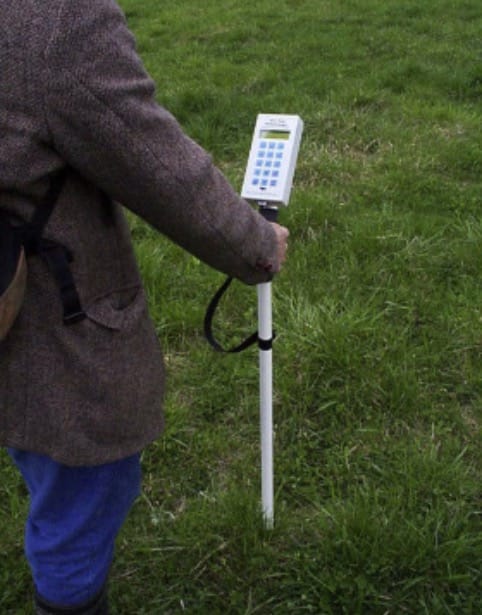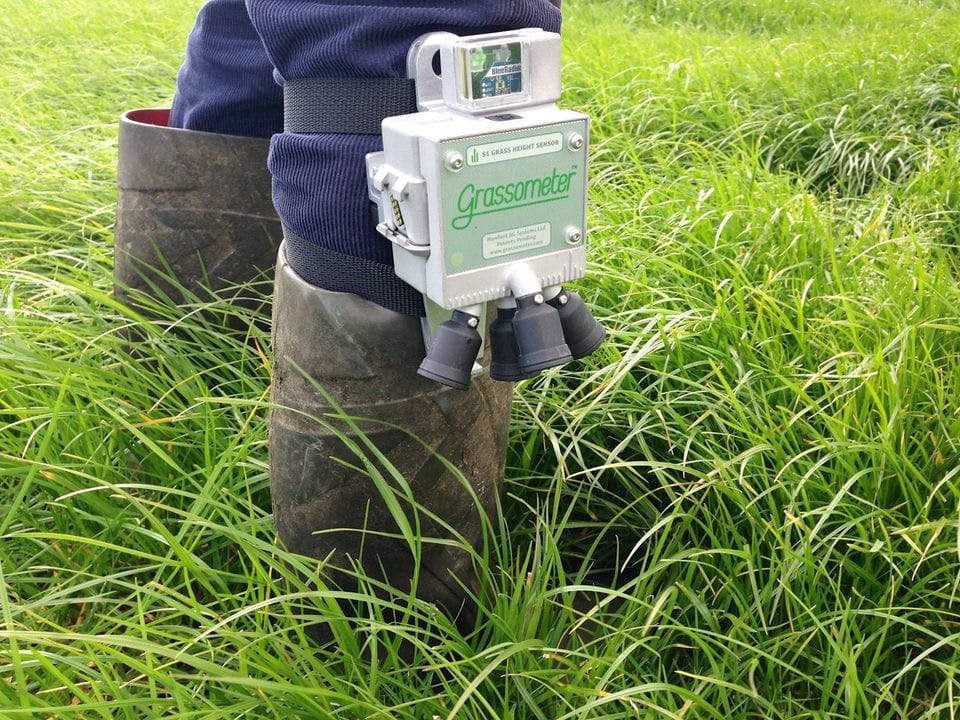Why Measure Grass?
Today, feed costs are the biggest expense on a livestock farm. In most cases, feed costs can occupy as much as 40% to 65% of the total farming expense.
This presents a unique opportunity for progressive livestock farmers. An opportunity to utilize your pastures more effectively. An opportunity to earn more profits and become more sustainable.
Why? Because your pasture is both a cheap as well as a nutritious source of feed for your animals. However, unlike buying feed, getting optimal yields from your pasture needs active management.
And a big part of this lies in measuring your pasture accurately and frequently. According to a recent research study, accurate pasture measurements alone can help you earn an additional 385 dollars per hectare every year. A big opportunity.
But despite all the opportunity and research studies, most farmers do not measure their grass, accurately and frequently enough. Why? Because they either think it’s easy to eyeball pasture growth measurements or because the cost and effort of doing so deters them.
If you think you can eyeball pasture growth measurements – you might be wrong.
And there are more cost-effective automatic pasture growth measurement solutions such as Pasture.io available today. So today, it is easier than ever before to put your pasture measurements on auto-pilot.
But there are also several other devices in the market that can help you measure your grass and it is important to understand the benefits and limitations of these pasture measuring tools too.
If you are evaluating the advantages and disadvantages of the Capacitance Probes or the Grassometer, I can confidently say that you are settling down for mediocrity!
Why do I say that? To understand that we need to look at how both these tools work. We also need to understand the advantages and disadvantages of both these tools.
Let’s begin with the capacitance probe first.
The Capacitance Probe
It’s actually the ‘PPCM - Pasture Probe Capacitance Meter’. But mostly it is known as the ‘Probe’. You can get one today for around 2,000 dollars. It was first used to estimate forage yields about 64 years ago, by Fletcher and Robinson (1956).

How the pasture probe works
A Capacitance Probe looks like a walking stick with an electronic meter device fixed to the top. It has a metal prong at the bottom. You can easily hand carry this device, while you walk your pasture.
An electric field is generated when the probe touches the ground. This electric capacitance change is directly proportional to the moisture content present. This in turn can help the probe make a few calculations and estimate pasture growth.
You are expected to place the probe at least 20 to 40 times on a paddock to get accurate readings. This roughly translates to placing the probe, every 6 paces or so you take, walking across the paddock.
The readings are then averaged out and converted to dry matter yield (DM kg/ ha), using complex linear equations that are usually pre-calibrated on each probe.
In other words, the probe essentially converts capacitance charge readings from your pasture to herbage mass using seven conversion equations that you can choose depending on the paddocks’ growing conditions. The data (readings) are saved in a control box and can be downloaded to a computer for print out.
However, if your farm conditions do not match the assumptions made in these calibrations, you could get inaccurate pasture growth measurements.
But this is important. Because a difference of about 300 kg DM per ha can mean the difference between your animals surviving or thriving. That’s why you need to get the most accurate pasture growth measurements possible.
Now let’s look closely at all the advantages and disadvantages that a probe can offer you.
Probe Advantages
- Portable
- Moderately expensive
- Simple to use, no elaborate training
- The probe can be calibrated to measure the mass of herbage DM to ground level, so you won’t have to collect dry herbage samples for frequent recalibrations
- Precise and accurate if calibrated properly, else it leads to errors
Probe disadvantages
- To achieve great precision of DM numbers from your several paddocks you have to take many readings. This is time-consuming, labor-intensive and costly.
- Since electrical capacitance varies with temperature and humidity. The device can give inaccurate readings when there’s heavy dew or prolonged drought conditions. The probe has to be calibrated accurately to automatically standardize the capacitance readings, to avoid errors
- It doesn’t differentiate between green and dead plant material. So you could be taking into account even the herbage that your animals may not eat.
- There is only a limited memory space to store data (up to 90 pastures). So you’ll have to remember to take frequent backups on your computer.
- You will not be able to “view” your pasture (as an audio-visual) like the other sophisticated gadgets, but can see print outs of the statistics.
- The probe itself cannot help you analyze results, see yield patterns over time or make effective grazing decisions you’ll have to download the raw data on to spreadsheets or text document to do all that manually.
- The equations used for the calculations are predominantly developed for use on perennial pastures like perennial ryegrass and white clover. So you will get inaccurate results if you have different pasture compositions across different seasons.
Now don’t get me wrong. I’m not saying that a probe can’t be useful. In fact, I’m saying that probes are can help you measure pasture more effectively when compared to eyeballing or even RPMs.
They are also not that expensive at about 2,000 dollars. But, under different conditions, they can give you inconsistent or inaccurate pasture growth measurements. Also, it can cost you a further 2,000 to 3,000 dollars a year in labour costs alone.
So why settle for these inaccuracies when you’re willing to invest so much time, effort and money?
The Grassometer

How the Grassometer works
The Grassometer is a grass measuring device mounted on the leg (fixed to his boot) of the farmer as shown in the above picture.
It uses four optical sensors to get clear images of the grass growing under it. It also uses a nine-point orientation sensor, to map the overall topography of the paddock automatically. It measures pasture growth levels and stores the data automatically.
So unlike the basic models of RPM, C-Dax and probes, the farmer need not bother about taking data backups and saving the data on his computer after walking the paddocks.
The device takes several readings of pasture cover each time the farmer’s foot or probe hits the grass. Triggered by an accelerometer, these grass measurements get mapped with GPS and are transmitted to your phone via Bluetooth, while you are walking.
Proprietary grassometer technology companies like Monford AG Systems offer convenient smartphone apps that automatically sync with the grassometer device and helps you map your entire farm, paddock by paddock. It also automatically creates pasture wedges for you.
Let’s look at the advantages of disadvantages of the grassometer, in more detail.
Grassometer advantages:
- Suitable for all geographical terrains
- Gives a pictorial view of your paddocks
- Not as labor-intensive as RPM or probe
- Portable and fairly inexpensive
- It is simple to use, no elaborate training
- Moderately precise and accurate
But, more importantly, you need to know the disadvantages of using a Grassometer, that could adversely impact your yields.
Grassometer disadvantages:
- Can still be time-consuming
- Operator fatigue can set in
- Not suitable to monitor big areas of pasture
- Lacks the accuracy demanded by industry standards
As you can see, Grassometers are convenient, suitable across terrains and cost-effective. But what was that again, about ‘moderate accuracy’ and ‘industry standards’?
A research study shows how inaccurate budgeting of forage on pastures and errors in sizing paddocks cannot be later compensated even with effective rotational grazing methods.
A couple of decades ago, a computer model called DAFOSYM (Dairy Forage System Model) was used to simulate pasture performance and determine the effects of inaccuracies in forage mass estimation.
Both capacitance probes and grassometers were used as part of this research. A representative grazing farm (base farm) was set up and the costs and returns from (i) low input and (ii) conventional management were calculated and fixed as the standard.
Different measurement tools simulated different scenarios and each of the costs and returns was calculated and compared to the standard values.
This study showed conclusive evidence that pasture investments are justified only if the error rate from your estimated forage yield is less than 10%. When the error rates increase above 10%, the loss in net return exceeded the operational cost to churn out that forage mass.
To cut a long story short, the study confirmed that probes and grassometers were:
- statistically inaccurate- underestimating forage mass resulted in less silage harvested, more pastures consumed and more feed purchased compared to the base farm, and the opposite occurred for an overestimation of forage mass.
- economically unacceptable – underestimating forage mass on pastures by 10% or 20% and not harvesting excess silage resulted in a net loss of $1900 to $4000, compared to the base farm.
The tools gave error rates ranging between 26% to 33% on the mean forage mass, which proved them to be both inaccurate and economically unviable.

These inaccuracies probably made the grassometer economically unviable for livestock farmers. And probably this was why Monford AG shut down their operations in 2017.
But let’s come back to the question we began with. Why use a probe or grassometer and settle for mediocrity?
I hope you found your answer. Especially, considering that you can take advantage of more advanced and automatic pasture growth measurement tools such as Pasture.io to make informed grazing decisions and earn more profits.
That brings us to the end of this piece. If you’re interested to learn more about earning additional profits from your pasture, consider downloading this free e-book now.
Until we meet again, happy Farming!
- The Dedicated Team of Pasture.io, 2020-09-23